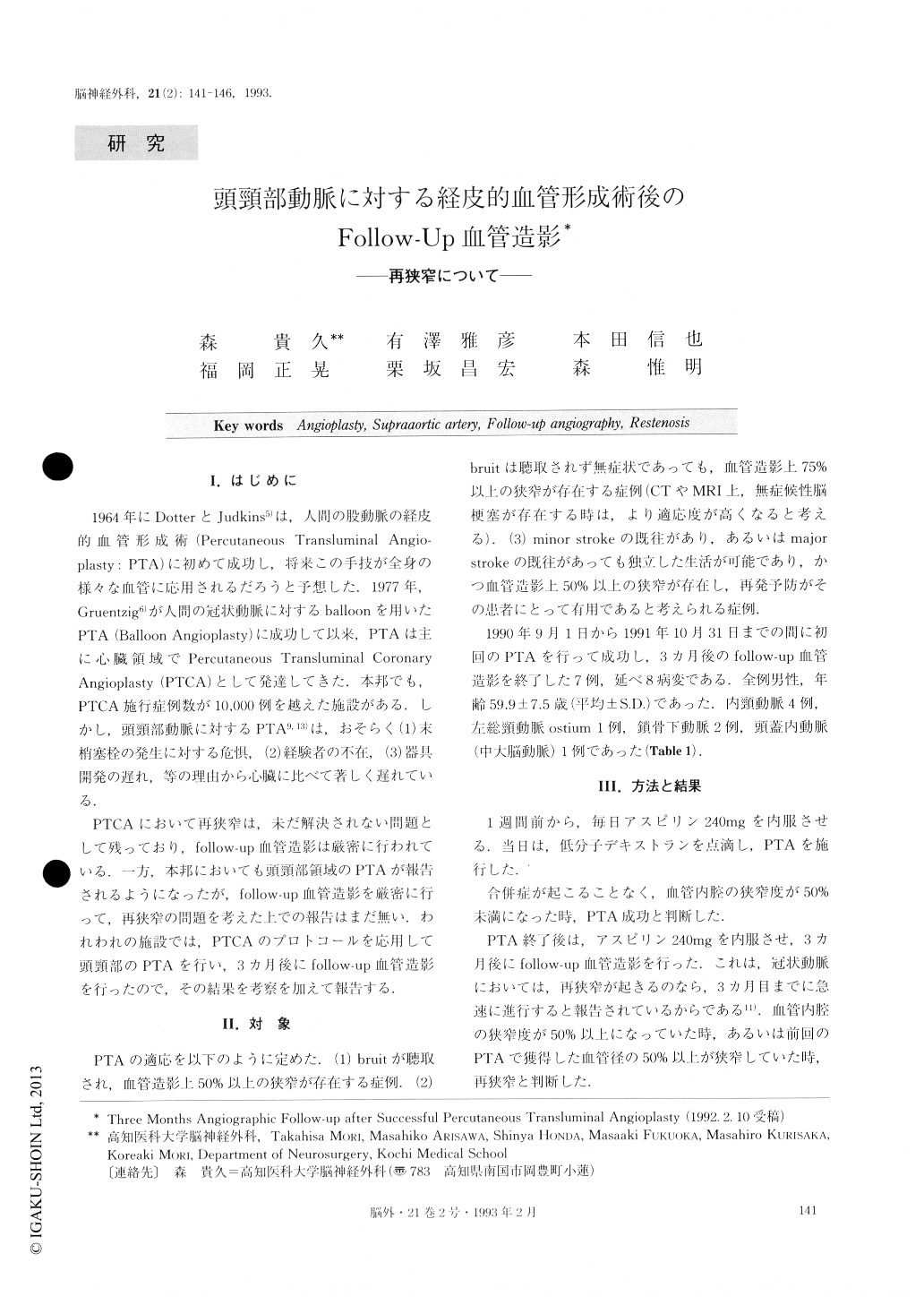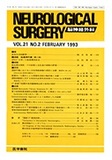Japanese
English
- 有料閲覧
- Abstract 文献概要
- 1ページ目 Look Inside
I.はじめに
1964年にDotterとJudkins5)は,入間の股動脈の経皮的血管形成術(Percutaneous Transluminal Angio—plasty:PTA)に初めて成功し,将来この手技が全身の様々な血管に応用されるだろうと予想した.1977年,Gruentzig6)が人間の冠状動脈に対するballoonを用いたPTA(Balloon Angioplasty)に成功して以来,PTAは主に心臓領域でPercutaneous Transluminal CoronaryAngioplasty(PTCA)として発達してきた.本邦でも,PTCA施行症例数が10,000例を越えた施設がある.しかし,頭頸部動脈に対するPTA9,13)は,おそらく(1)末梢塞栓の発生に対する危惧,(2)経験者の不在,(3)器具開発の遅れ,等の理由から心臓に比べて著しく遅れている.
PTCAにおいて再狭窄は,未だ解決されない問題として残っており,follew-up血管造影は厳密に行われている.一方,本邦においても頭頸部領域のPTAが報告されるようになったが,follow-up血管造影を厳密に行って,再狭窄の問題を考えた上での報告はまだ無い.われわれの施設では,PTCAのプロトコールを応用して頭頸部のPTAを行い,3ヵ月後にfollow-up血管造影を行ったので,その結果を孝察を加えて報告する.
Percutaneous Transluminal Angioplasty (PTA) is ap-plied to supra-aortic arteries. Although first follow-up angiography after coronary angioplasty is usually undergone three or four months later, there are few re-ports of follow-up angiography after PTA of supraaor-tic arteries. Because of this, we performed follow-up angiography three months after successful PTA on eight cases of stenosis in seven patients. Although no symptom due to restenosis occurred, it was shown to have occurred in one of four cases of internal carotid arterial stenosis. It was a case of ostial stenosis of a left common carotid artery. Restenosis occurred in neither two cases of subclavian arterial stenosis, nor in a case of left middle cerebral arterial stenosis. The overall re-stenosis rate was 25%. We suspect that it is important to perform a follow-up angiography after angioplasty of supra-aortic arteries, and our result suggests that the restenosis might occur before three months after PTA as well as after coronary angioplasty.

Copyright © 1993, Igaku-Shoin Ltd. All rights reserved.


